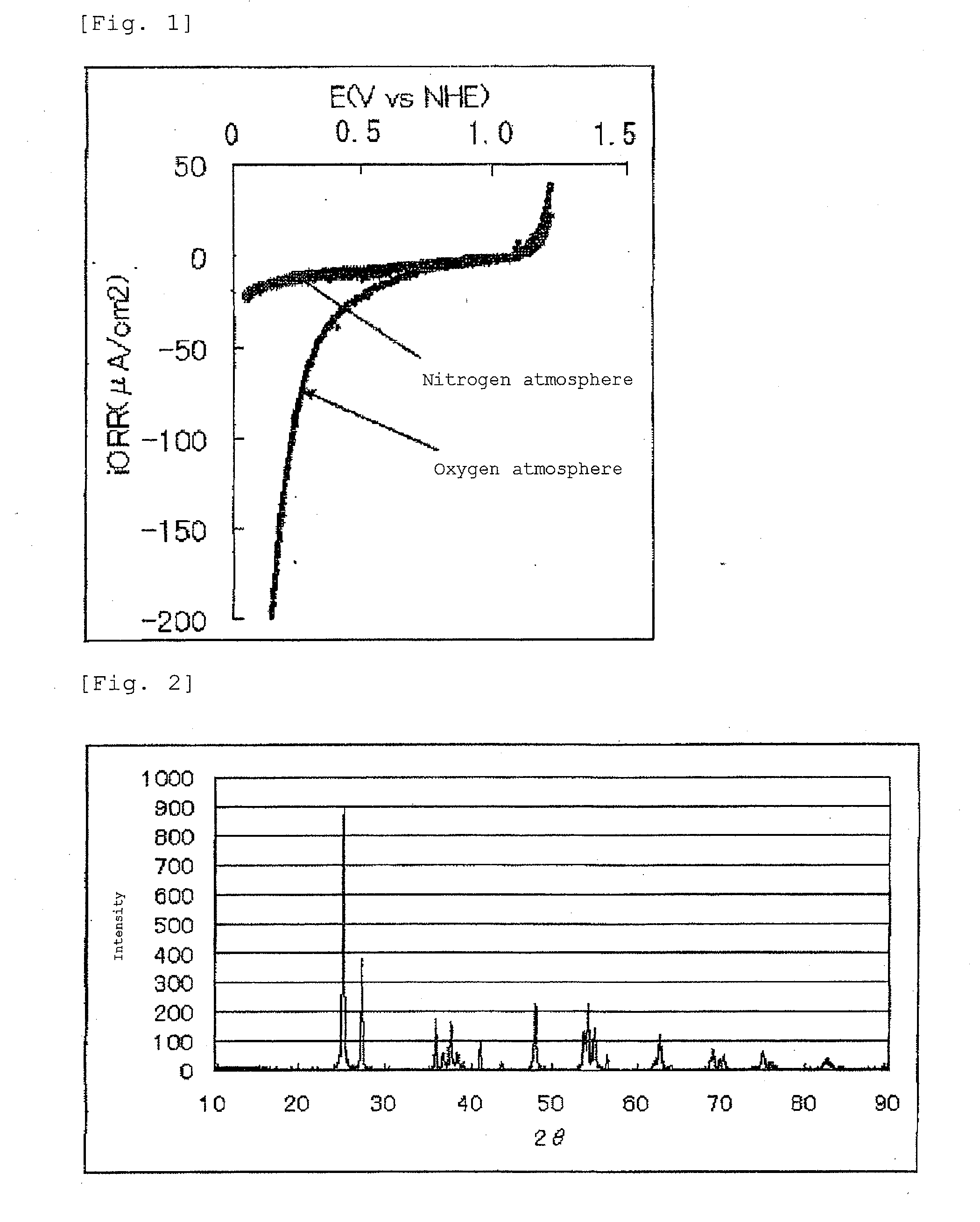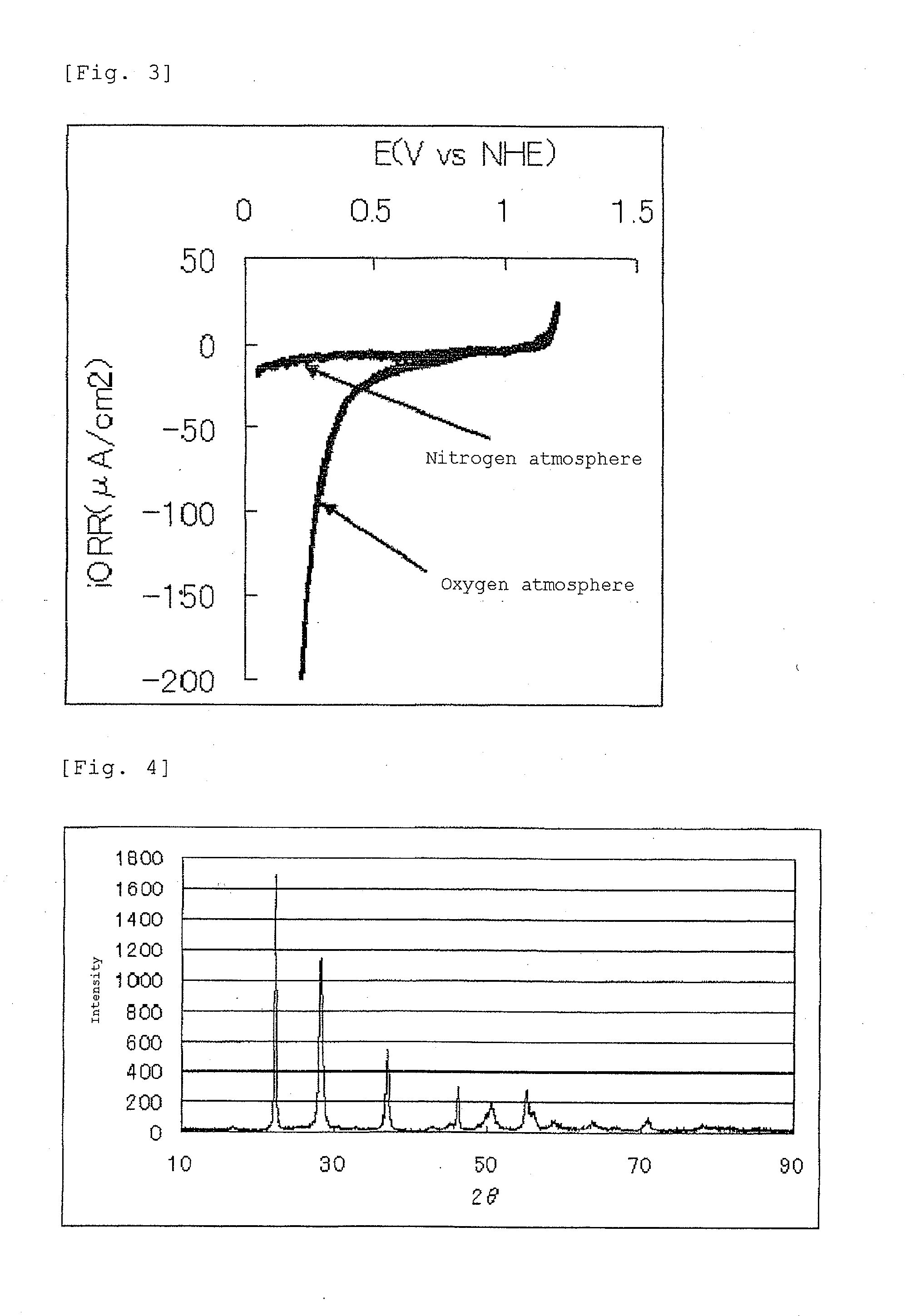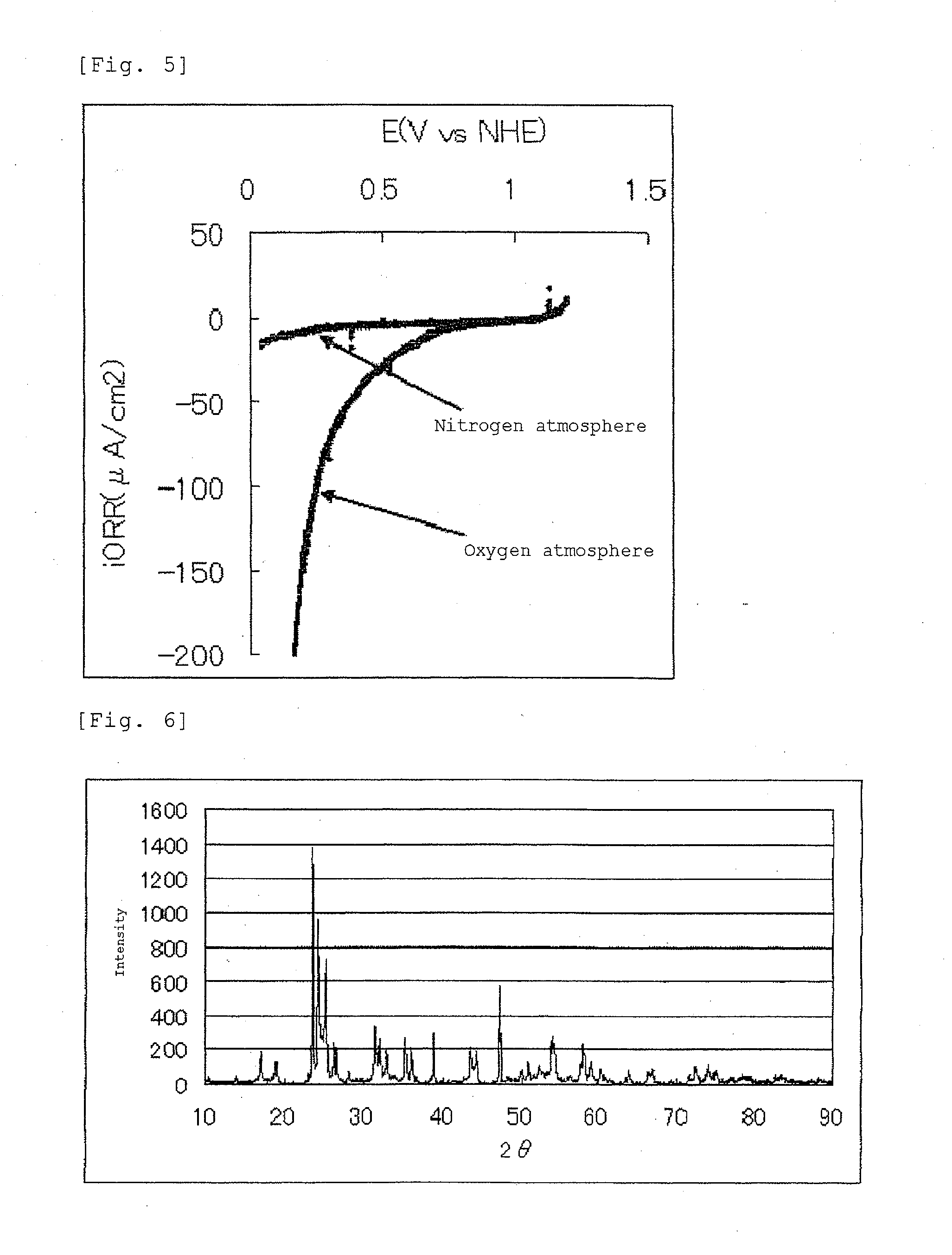Electrocatalyst layer, membrane electrode assembly and fuel cell
a membrane electrode and electrode technology, applied in the direction of cell components, niobium compounds, electrochemical generators, etc., can solve the problems of low oxygen reduction activity, and high price of platinum, and achieve high oxygen reduction activity, stable and resistant to corrosion, and high potential
- Summary
- Abstract
- Description
- Claims
- Application Information
AI Technical Summary
Benefits of technology
Problems solved by technology
Method used
Image
Examples
example 1
Production of Electrocatalyst
[0112]Titanium (IV) 2-ethylhexanoate (manufactured by Wako Pure Chemical Industries Ltd.) in an amount of 5.0 g was placed in an alumina crucible and was heat treated in an electric furnace (desktop muffle furnace KDF P90 manufactured by DENKEN CO., LTD.) under a stream of nitrogen at 50 NL / min under the following conditions.
[0113]Temperature increasing rate: 20° C. / min
[0114]Heat treatment temperature: 600° C.
[0115]Heat treatment time (retention time): 2 hours
[0116]After the heat treatment, the product was naturally cooled. As a result, 0.66 g of titanium (IV) oxide was obtained. The titanium (IV) oxide was sufficiently crushed in a mortar to give an electrocatalyst (1).
(Production of Fuel Cell Electrode)
[0117]The oxygen reduction activity was determined in the following manner. The electrocatalyst (1) in an amount of 0.95 g and carbon (XC-72 manufactured by Cabot Corporation) weighing 0.5 g were added to 10 g of pure water. The mixture was ultrasonicall...
example 2
Production of Electrocatalyst
[0134]The procedures of Example 1 were repeated except that 5.0 g of the titanium (IV) 2-ethylhexanoate (manufactured by Wako Pure Chemical Industries Ltd.) was replaced by 5.0 g of niobium (IV) 2-ethylhexanoate (manufactured by Wako Pure Chemical Industries Ltd.), thereby obtaining 1.0 g of niobium oxide. The niobium oxide was sufficiently crushed in a mortar to give an electrocatalyst (2).
(Production of Fuel Cell Electrode)
[0135]A fuel cell electrode (2) was produced in the same manner as in Example 1 except that the electrocatalyst (1) was replaced by the electrocatalyst (2).
(Evaluation of Oxygen Reduction Activity)
[0136]The oxygen reduction activity was evaluated in the same manner as in Example 1 except that the fuel cell electrode (1) was replaced by the fuel cell electrode (2).
[0137]The current-potential curve recorded during the measurement is shown in FIG. 3.
[0138]The fuel cell electrode (2) manufactured in Example 2 had an oxygen reduction onse...
example 3
Production of Electrocatalyst
[0143]The procedures of Example 1 were repeated except that 5.0 g of the titanium (IV) 2-ethylhexanoate (manufactured by Wako Pure Chemical Industries Ltd.) was replaced by 5.0 g of niobium (IV) 2-ethylhexanoate (manufactured by Wako Pure Chemical Industries Ltd.) and the heat treatment temperature was changed from 600° C. to 800° C., thereby obtaining 1.0 g of niobium oxide. The niobium oxide was sufficiently crushed in a mortar to give an electrocatalyst (3).
(Production of Fuel Cell Electrode)
[0144]A fuel cell electrode (3) was produced in the same manner as in Example 1 except that the electrocatalyst (1) was replaced by the electrocatalyst (3).
(Evaluation of Oxygen Reduction Activity)
[0145]The oxygen reduction activity was evaluated in the same manner as in Example 1 except that the fuel cell electrode (1) was replaced by the fuel cell electrode (3).
[0146]The current-potential curve recorded during the measurement is shown in FIG. 5.
[0147]The fuel ce...
PUM
| Property | Measurement | Unit |
|---|---|---|
| temperature | aaaaa | aaaaa |
| temperature | aaaaa | aaaaa |
| BET specific surface area | aaaaa | aaaaa |
Abstract
Description
Claims
Application Information
 Login to View More
Login to View More - R&D
- Intellectual Property
- Life Sciences
- Materials
- Tech Scout
- Unparalleled Data Quality
- Higher Quality Content
- 60% Fewer Hallucinations
Browse by: Latest US Patents, China's latest patents, Technical Efficacy Thesaurus, Application Domain, Technology Topic, Popular Technical Reports.
© 2025 PatSnap. All rights reserved.Legal|Privacy policy|Modern Slavery Act Transparency Statement|Sitemap|About US| Contact US: help@patsnap.com



